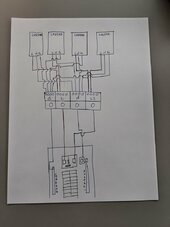clayswen
New Member
I am installing a sol-ark 12k with a 9.2k solar array. I have a 200 amp load center. This is grid tie and I will be selling back to the local utility. Do I need a subpanel to line side feed back through the load center? The sol ark has a max continous of 9000 watts. I am in Texas with no shading. I wasn't sure what kw of backfeeding through the load center requires a seperate subpanel> Just seeing what you professionals think before I consider a subpanel.
Here is the one I have.
Here is the one I have.



